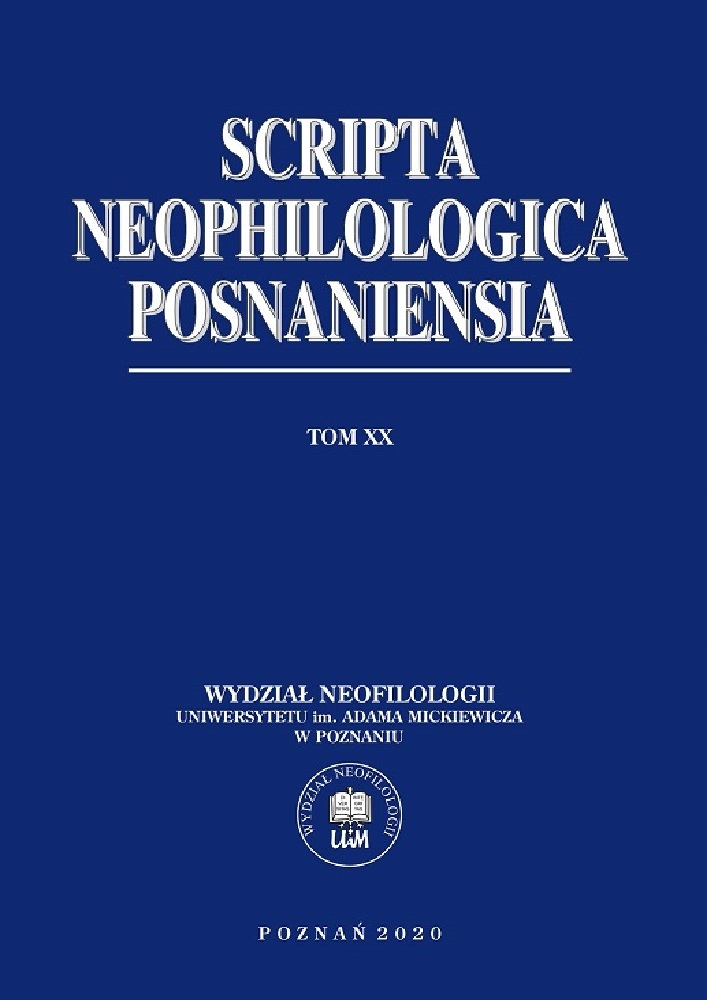Abstrakt
Nowadays, computer technology and social media can be used in certain ways to create positive or negative images of political communicators. More and more people receive political communication with the use of electronic devices via the Internet and social media. The ways in which one can create and transmit images of political communicators have evolved. Companies use new methods of gaining and delivering political information to receivers. At present, information technology is sometimes used not only to send political information but also to manipulate the receivers and change their political views in the fight for support and to win elections. Electronic devices, the Internet and social media, can be used to gain support or to defame political opponents. This paper has been written to bring closer how social media participation, computer technology and software can be utilized to obtain information which then, neatly tailored, can serve as a tool to manipulate political views of addressees of political communication. This article presents the procedure of obtaining, processing and applying information in creating images of politicians by private companies. It also analyzes people’s awareness of ways in which social media communication can be used in creation of political image. Hence, a survey has been conducted to research the participation of university students in social media and their awareness of how the data obtained from them can be used in for political reasons. The paper also explains how incorporating and combining social media platforms, psychology, algorithms, the Internet and cutting edge computer software opened new ways to impact political views with political communication.
Bibliografia
Białas, B. 2011. Advergames – przyszłość polityki?. In: Jeziński, M. (ed.). Nowe Media. Vol. 2/20–11. Toruń: Uniwersytet Mikołaja Kopernika. 83–98.
Blichiewicz, S., Dunin, K., Dymek, J., Kutyła, J., Sutowski, M. and A. Wiśniewska. (eds.). 2016. Wybory USA 2016. Warszawa: Wydawnictwo Krytyki Politycznej.
Cao, S. 2018. “Ex-Cambridge analytica director unveils the dark reality of data industry”. The Observer: https://observer.com/2018/04/ex-cambridge-analytica-director-speaks-out-on-facebook-scandal/, (date of access: 1.02.2019)
Cialdini, R.B. 2001. Wywieranie wpływu na ludzi. Teoria i praktyka. Gdańsk: Gdańskie Wydawnictwo Psychologiczne.
Cichosz, M. 2004. Wizerunek lidera politycznego. In: Jeziński, M. (ed.), Marketing polityczny w poszukiwaniu strategii wyborczego sukcesu. Toruń: Dom Wydawniczy DUET.
Czaplińska, P. 2015. Strategia budowania wizerunku osób znanych. In: Grzegorczyk, A. (ed.), Perswazyjne wykorzystanie wizerunku osób znanych. Warszawa: Wyższa Szkoła Promocji, Mediów i Show Businessu.
Fleischer, M. 2002. Teoria kultury i komunikacji: systemowe i ewolucyjne podstawy. Wrocław: Dolnośląska Szkoła Wyższa Edukacji Towarzystwa Wiedzy Powszechnej.
Hern, A. 2018. “Cambridge analytica: how did it turn clicks into votes?”. The Guardian: https://www.theguardian.com/news/2018/may/06/cambridge-analytica-how-turn-licks-into-votes-christopher-wylie (date of access: 1.02.2019)
Jankiewicz, A. 2012. „Cechy charakterystyczne komunikacji politycznej”. In: Puppel, S. (ed.), Scripta de Communicatione Posnaniensi IV – Transkomunikacja 2. Poznań: Wydział Neofilologii UAM. 27–38.
Jeziński, M. (red.). 2004. Marketing polityczny w poszukiwaniu strategii wyborczego sukcesu. Toruń: Dom Wydawniczy DUET.
Jeziński, M. 2011. „Po co politykom nowe media? O politycznym istnieniu w wirtualnej przestrzeni”. In: Jeziński, M. (ed.). Nowe Media. Vol. 2/ 2011. Toruń: Wydawnictwo Adam Marszałek. 11–30.
Jung, B. (red.). 2001. Media komunikacja biznes elektroniczny. Warszawa: Difin.
Kunczik, M. and A. Zipfel. 2000. Wprowadzenie do nauki o dziennikarstwie i komunikowaniu. Warszawa: Wydawnictwo Naukowe Scholar.
Labocha, J. 2008. Tekst, wypowiedź, dyskurs w procesie komunikacji językowej. Kraków: Wydawnictwo Uniwersytetu Jagiellońskiego.
Lasswell, H.D. 1948. “The structure and function of communication in society”. In: Bryson, L. (ed.). The communication of ideas. New York: Institute for Religious Studies.
Leszczuk-Fiedziukiewicz, A. 2011. “Internet jako narzędzie kreowania wizerunku polityka”. In: Jeziński, M. (ed.), Nowe Media. Vol. 2/2011. Toruń: Wydawnictwo Adam Marszałek.
Mcnair, B. 1998. Wprowadzenie do komunikowania politycznego. Wrocław: Wydawnictwo Alta 2.
Młynarska, K. 2011. „Zarządzanie wizerunkiem. Proces kreowania wizerunku”. In: Szplit, A. (ed.), Studia i materiały – Miscellanea Oeconomicae. Kielce: Wydział Zarządzania i Administracji Uniwersytetu Humanistyczno – Przyrodniczego Jana Kochanowskiego w Kielcach. 20–1.
Molenda-Zdziech, M. 2001. „Socjologiczna problematyka komunikowania masowego”. In: Jung, B. (ed.), Media komunikacja biznes elektroniczny. Warszawa: Difin.
Morreale, S.P., Spitzberg, B.H., and J.K. Barge. 2008. Komunikacja między ludźmi. Warszawa: Wydawnictwo Naukowe PWN.
Puppel, S. 2004. “An outline of a domain-resource-agent-access-management (DRAAM) model of human communication: towards an ecology of human communication”. Oikeios Logos 1. 2–27.
Puppel, S. (ed.), 2012. Transkomunikacja II. Poznań: Katedra Ekokomunikacji UAM.
Puppel, S. 2016. „Kuźnia Hefajstosa czyli krótki zarys teorii wizerunku w komunikacji ludzkiej”. Scripta Neophilologica Posnaniensia XVI. 109–124.
Puppel, S. 2017. (ed.), Scripta Neophilologica Posnaniensia – Prace i dnie. XVII.
Rosenberg, M., and G. Dance. 2018. “‘You are the product’: targeted by Cambridge analytica on Facebook”.
The New York Times: https://www.nytimes.com/2018/04/08/us/facebook-users-data-harves ted-cambridge-analytica.html, (date of access: 1.02.2019)
Shannon, C. and W. Weaver. 1949. A mathematical model of communication. Urbana, Ill.: University of Illinois Press.
